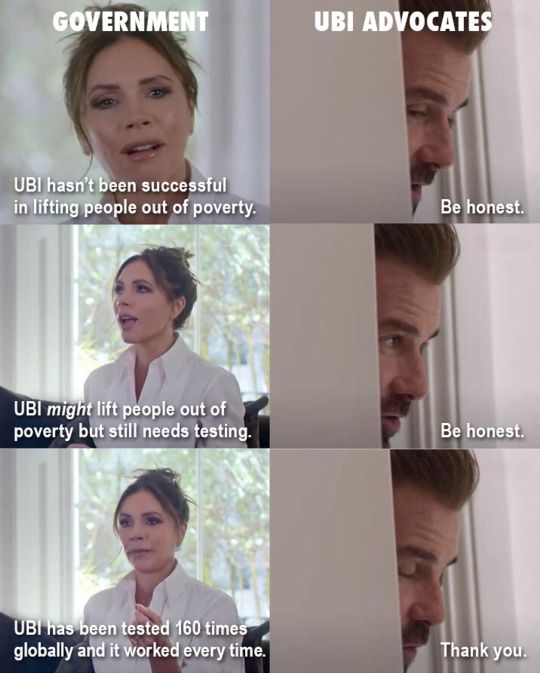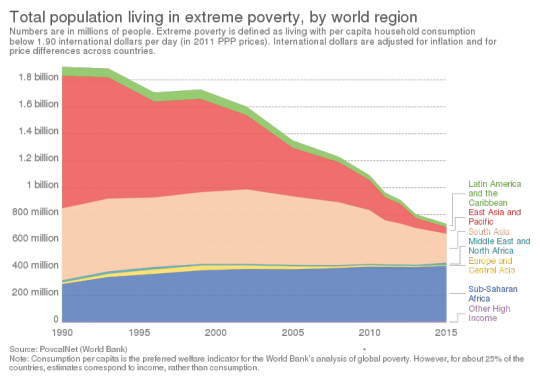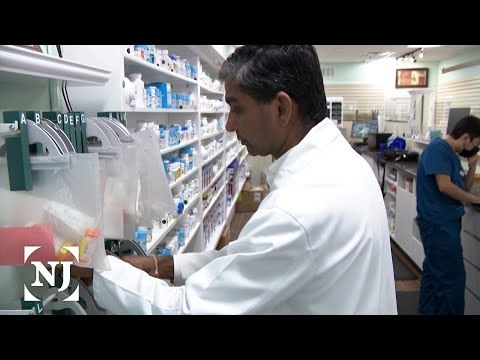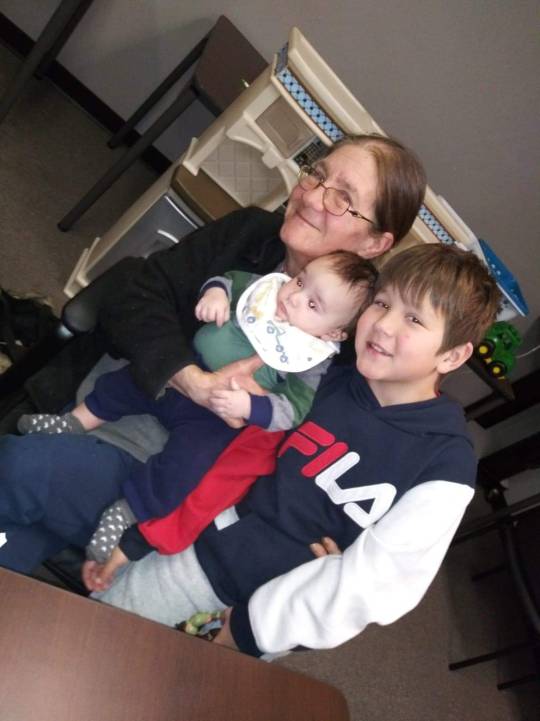#poverty line
Text


#universal basic income#UBI#social welfare#unconditional transfer payment#means test#guaranteed minimum income#poverty line#full basic income#partial basic income#pilot projects#Mongolia#Iran#child benefit#pension#Bolsa Familia#Thamarat Program#economic crisis#COVID-19 pandemic#direct payments#Alaska Permanent Fund#negative income tax#NIT
175 notes
·
View notes
Text
I refuse to call government assistance programs “welfare” or “benefits”.
I’ve been on government assistance programs my whole life. I have never lived above the poverty line.
It’s a system that doesn’t care about my wellbeing, they care about doing the bare minimum to keep people alive enough to function and work, and if you’re disabled and cannot work, they give significantly less of a fuck.
And benefits?? What benefits?
Food stamps that run out within two weeks because I am budgeting with 8$ a day with literally dozens of dietary restrictions? Or do you mean the housing voucher that I have to never even have a gift card, penny to my name, Sams club membership, phone bill, literally anything that could be “income” in order to qualify? That same housing voucher system that if I mess up even once with I not only lose all government aid for at least 5 years, it’s also mandatory PRISON time for 1 year?? “Oh but they would never do that, right?” Nope! I have several friends who are now felons for minor lease violations and unhoused as a result! Oh maybe you mean the state health insurance that doesn’t cover most treatments, specialists, and testing I need and if I tried to make a gofundme to cover, I would lose aforementioned housing? Oh and we can’t forget all the money I get for being disabled, which is exactly 0$. I’m still fighting for SSI and have been for 6 years! That’s over 6 years with absolutely zero income. ZERO. And guess what, whenever I *do* get on SSI, I will lose my housing voucher. And I won’t be able to afford my current apartment because even in subsidized low income housing it’s too expensive for the maximum SSI “benefit” amount. And on SSI you can’t have savings over 2000$. Oh and they do make housing for people who are low income where you pay 30% of your income but I can’t even be on the waitlist since I don’t have any income. And on top of all this, I can never get married because I’ll lose all of the programs.
I could keep going. That’s not even half of the programs I’m a part of.
• None of them give me cash in hand. Even for vouchers I have to provide receipts for everything.
• Food stamps just straight up won’t even cover ineligible items. Which includes hot foods.
• I genuinely don’t believe that there’s a way to “game the system” and why would you? You would gain literally nothing.
• It’s designed to keep people poor. Once you make over a certain amount, you lose all or almost all benefits. There’s no way to slowly transition out of the programs, if you’re someone who’s able to. It’s all in or all out.
• All of these barriers are made significantly worse while unhoused/homeless. I’ve been homeless for over half of my life and there’s so many fucked up rules. If I missed one night staying in the shelter, I lost my housing voucher because I no longer was “verified as homeless” even if I was sleeping outside still.
#ranting#poverty#public welfare#welfare programs#government aid#government benefits#state benefits#disability benefits#SSI#disability#poor#poverty line#assistance#assistance programs#goverment assistance#usa specific#usa politics#chronically couchbound#poor people#classism#food stamps#ebt#housing vouchers#medicaid#state insurance#healthcare#health insurance#systemic poverty#forced poverty#welfare queen
486 notes
·
View notes
Text
Why the poverty line is broken
Something interesting I learned in school to be a social worker.
in the 1950's a study showed that the average American spent about 1/3 of their income on groceries. They were already calculating the cost of monthly grocery budgets so they set the poverty line at three times the monthly food budget and that is how it has been calculated ever since. For 70 years!
When I learned this factoid the average American spent about 1/7th of their income on food meaning that the poverty line was less than half of what it should have been. It needed to be that budget x 7, not x3. Currently American's spend about 9% of their budget on food. If we were going to keep using this standard to calculate the poverty line, it should be more than three times the current recommendation.
Let's put that into more solid numbers.
Right now the poverty line for a family of four is $26, 500. I'm sorry but this is obscene. Keep in mind this is the line that determines who is eligible for any kind of benefits in the contiguous 48 states and the District of Columbia. If it was calculated correctly should be $88, 245 for a family of 4. Even if you think that's too high, there are plenty of numbers between 26k and 88k where people are literally starving and not having their needs met while being told, being GASLIT by the government that they should be doing alright.
Think about that.
PS. This is why Obama saying that people up to 200% of the poverty line qualified for health care was so important. HE GOT IT! His team knew that if they fixed the poverty line they would break the country so they had to deal with one problem at a time. Incrementalism can work when it's done right!
#poverty line#politics#us politics#broken#system#cost of living#food#family#Obamacare#medical care#medicaid#why the system is broken#we need change#something so small with such a big impact#social work#rants
2 notes
·
View notes
Text
Capitalism Sucks
I know I’m not the first to say this, or even the second, third, or one-hundredth, but Capitalism is fucking awful. I just wanted to give some breakdowns into why today. This is going to be a less edited article, but its still important.
Lets start with just some basic issues here; for clarification all of these numbers are based on averages in the continental United States. The minimum wage,…
View On WordPress
#ADHD#america#anti-capitalism#anti-capitalist#bills#capitalism#corporation#Discussion#large corporation#Life#Living#living today#minimum wage#Minimum-Wage#mom and pop store#money#Nerdy#Neurodivergent#Neurodiverse#poverty#poverty line#Queer#School#small business#small store#taxes#united states#united states of america#Writing
0 notes
Text
Global Multidimensional Poverty Index 2023
Unstacking global poverty: Data for high-impact action
In 2015, the 2030 Agenda for Sustainable Development and Sustainable Development Goal (SDG) 1 set out to overcome the greatest global challenge: ending poverty in all its forms. At the midpoint to 2030, people’s lives continue to be improved in multiple ways simultaneously.
Globally, an array of challenges impedes poverty reduction…

View On WordPress
#Multidimensional Poverty Index#Poverty#Poverty 2023#Poverty Index#Poverty Line#Poverty Measurement#Poverty Report 2023#SDG 1#SDG Eliminate Extreme Poverty#UN#UN SDGs
0 notes
Text
The categories are based on the United States federal poverty line, which was $14,580 for one adult in 2023. Eligibility for some programs is based on the poverty line or multiples thereof, such as "up to twice the poverty line."
0 notes
Text
It appears I may have lost my state health insurance because I had the audacity to make a marginal amount more above the "poverty line."
You know... the poverty line that hasn't been re-evaluated since the 60s...
0 notes
Text
Forced Veganism Rethink
For the past three years I’ve been vegan. A junk food vegan. Processed foods have always been my friend. They’re cheap, full of energy and bad for you? Meatloaf had it right when he said two out of three ain’t bad.
I’ve dusted off my old cognitive dissonance from storage. I guess once your eyes are opened to the ethical “problems” of a modern society it becomes difficult to close them again. Suffering does seem to be a keystone of our society.
A major issue I face is lack of funds. I continue to bleed money being well into month four with no income outside of government welfare. Every week that passes a chunk of my savings disappears forever because our welfare doesn’t even cover rent. Won’t someone think of the landlords?
Failure to stem this bleeding will likely result in homelessness. This is the cost of living and it’s too damn high. So for now, I return to being a carnivore. I’ll still buy vegetarian or vegan when I can justify the cost, and I’ll cut down on meals and make smaller portions. This can also help me to lose weight back to the healthy range again, maybe.
But unfortunately for salmon, they are a very healthy meal. We are making them better for the environment. For a 5kg fish, at around a 60% yield. That’s 3kg of edible flesh. With 115g meal servings, that works out to be one entire salmon slaughtered every 27 meals.
Onward to the decline. 🫠
#extinction event#veganism#salmon#vegan#fuck landlords#poverty line#animal cruelty#🫠#the decline#or is it collapse?
0 notes
Text
Children bearing brunt of stalled progress on extreme poverty reduction worldwide.
Global Trends in Child Monetary Poverty According to International Poverty Lines – which for the first time looks at trends in extreme child poverty – finds that while the number of children living on less than US$2.15 a day decreased from 383 million to 333 million (or 13 per cent) between 2013 and 2022, the economic impact of COVID-19 led to three lost years of progress, or 30 million fewer children than projected in the absence of COVID-19-related disruptions.
0 notes
Text
Man, I started ranting about my childhood to the walls and now I'm crying
0 notes
Text
The Plight of Adjunct Faculty on America's Campuses, by Mark J. Drozdowski, Ed.D.
I've been an adjunct professor for 20 years, teaching courses from time to time at various universities while working full time as a college administrator and consultant. Teaching is a passion of mine that happens to provide a few extra bucks on the side.
Yet for tens of thousands of adjunct professors, teaching part time is a dead-end job that doesn't provide a living wage. Most barely scrape by despite having a Ph.D. and years of classroom experience.
Adjuncts are higher education's version of migrant laborers — professionals hopping from campus to campus with no job security, a meager income, no health insurance or retirement benefits, and little hope for advancement. And their numbers are growing.
College students will likely encounter many adjunct instructors during their time in school, though many won't know it or even care. But are they being duped? Is this a classic bait-and-switch scenario deceiving students and families who assume classes are taught by "real" faculty? Does the increasing reliance on adjunct faculty threaten the quality and viability of higher education?
Most Adjuncts Earn Poverty-Level Wages
The full-time, tenure-track professor is a dying breed. Today, part-time faculty members constitute 40% of the academic workforce, compared to just 24% in 1975. More broadly, the classification of "contingent" faculty — which includes part-time adjuncts, full-time instructors not on the tenure track, and graduate-student teaching assistants — accounts for roughly 75% of the instructional staff across America's colleges and universities.
Adjuncts often cobble together a living by teaching at several institutions. A 2014 congressional report revealed that 89% of adjuncts taught at more than one college, while 27% worked at three schools and 13% taught at four or more, often requiring lengthy commutes between campuses.
Currently, adjuncts earn an average of just $2,700 per course and as little as $1,500 per course at community colleges. All told, adjuncts typically earn between $20,000 and $25,000 annually, compared to the $80,000 average salary for full-time professors, putting them below the federal poverty guideline for a family of four.
Adjuncts earn an average of just $2,700 per course and as little as $1,500 per course at community colleges. This equals about $20,000-$25,000 annually.
It's no wonder, then, that nearly 25% of adjunct faculty require public assistance, and a mere 15% say they can comfortably cover basic expenses each month. An adjunct professor in New England, for example, has to teach four classes a year just to put food on the table for their family.
On top of financial woes, most adjuncts have no health or disability benefits, face an uncertain job market semester to semester, and can have classes canceled at the last minute because of low enrollment or other factors.
Stress and anxiety are simply a way of life. Stories abound of adjuncts sleeping in empty classrooms or cars and having mental breakdowns while teetering on the edge of personal and professional disaster. It's certainly not the life they envisioned while in graduate school.
Adjuncts Face Increased Levels of Stress, Burnout
An essay by an anonymous adjunct chronicles his career spanning 25 years of teaching part time. He's taught more than 500 courses across seven colleges, putting in 16-hour days and 80-hour weeks. His repertoire features 60 courses, including 25 he's created from scratch, and he's taught as many as 27 courses in one year.
He does it for the love of teaching and the betterment of students, but he's justifiably burnt out and at the end of his rope. He is, as the title of his essay suggests, on a "treadmill to oblivion."
And he's not alone. Tens of thousands of adjuncts are overworked and overstressed, which can lead to inferior teaching and learning and a lack of meaningful engagement with students. In its 2020 report titled "An Army of Temps," the American Federation of Teachers (AFT) notes that the continuing trend toward employing contingent faculty "undermines the faculty role in student success."
Tens of thousands of adjuncts are overworked and overstressed, which can lead to inferior teaching and learning.
Adjuncts logging long hours and traveling from campus to campus don't have sufficient time to prepare for classes or provide thorough feedback on assignments. They don't have offices, let alone office hours. They're hit-and-run teachers — not long-term mentors or collaborators on research projects. They can't get to know students well and write recommendations for employment or graduate school.
And given the lack of tenure and job security, they're less likely to risk future employment by introducing controversial ideas and encouraging students to think critically about thorny issues. While some may be outstanding teachers, adjuncts are not, claims AFT, "deployed adequately by their departments or institutions to enhance the education experience for students."
Does this situation constitute an act of fraud, then, on the part of colleges and universities? Are students receiving an education — and evaluations and grades — from the faculty advertised on websites and in course catalogs? Are families getting a fair return on their considerable investment?
As more tuition dollars flow into colleges, fewer are being spent directly on teaching and learning.
What if they knew before making that first tuition payment that their student would be taught primarily by a revolving door of part-timers and not, as the colleges so proudly declare, by the "world-class" faculty who burnish their brand?
Consider, too, that as tuition costs have mushroomed, the percentage of school spending on instructional costs has failed to keep pace. Over the past 20 years, the average tuition at private universities has risen 144%. Out-of-state tuition and fees at public institutions have increased 165%, while in-state costs have grown 212%.
But increases in spending on instruction have lagged behind expenditures on other areas, such as research, academic support, and student services. In other words, as more tuition dollars flow into colleges, fewer are being spent directly on teaching and learning, perhaps owing to the shift toward paying cheaper adjuncts instead of hiring full-time faculty.
Women and Minorities Make Up Disproportionate Number of Adjuncts
A study by the TIAA Institute offers some good news: Women and underrepresented minorities gained a greater share of faculty positions over a 20-year period. The bad news: Most of those gains occurred at the part-time and adjunct ranks.
Minorities hold only 10% of tenured jobs, while women hold 49% of faculty positions but only 38% of tenured jobs. During that period, part-time appointments for women grew 144%, raising the percentage of women in part-time roles from 48% to 56%. Whether these trends result from inherent biases among senior faculty and administrators remains unclear, but it's certainly plausible.
Where bias clearly does exist is in the notion that adjunct faculty can make the leap to full-time, tenured jobs. Adjuncts are cursed with a stigma of inferiority that prevents them from advancing professionally.
Minorities hold only 10% of tenured jobs, while women hold 49% of faculty positions but only 38% of tenured jobs.
The anonymous adjunct mentioned earlier noted that during his 25 years in the field, he's seen only one part-timer make such a transition. "Once in that ghettoized space," writes Angela B. Fulk, another long-time adjunct, "most of us will find it impossible to escape."
Adjuncts are most assuredly an exploited labor class — a tool of convenience that provides universities flexibility and cost savings. And what happens when people become tired of exploitation? They unionize.
In the 2018 book "Professors in the Gig Economy: Unionizing Adjunct Faculty in America," numerous authors examine the national labor movement that resulted in 35 collective bargaining agreements being ratified between 2010 and 2016. As a result, some adjuncts have achieved higher wages, better benefits, and greater job stability.
Despite these important gains, critics claim the unionization movement has done little to meaningfully change the contingency nature of adjunct employment.
The Future of the Adjunct in Higher Education
As an adjunct myself, I've never considered making a move to the ranks of full-time faculty, assuming that's even possible. Like many part-timers, I teach courses related to my profession, offering students insights from the trenches that complement what they learn in books and articles. These "pracademics" add special value to the curriculum in certain fields and are quite often perfectly happy maintaining their part-time status.
Yet for another class of faculty, especially those in the humanities and social sciences, teaching is Plan A. So many adjuncts enter and exit graduate school eyeing a career doing what they love — teaching students and immersing themselves in university life.
They tire of hearing comments suggesting no one is forcing them to remain on this treadmill, that they chose this path fully aware of the flooded and difficult academic job market, and that they should finally consider giving it all up and doing something else. They love their field and want to teach, and they'll cling to the faint hope it'll all work out someday.
For most, it won't. But perhaps their conditions will continue to improve through collective bargaining and the growing realization on campuses and beyond that these dedicated academics deserve better.
0 notes
Text
Global poverty
The total number of people living in extreme absolute poverty globally, by the widely used metric of $1.00/day (in 1990 U.S. dollars) has decreased over the last several decades, but most people surveyed in several countries incorrectly think it has increased or stayed the same.[590] However, this depends on the poverty line calculation used. For instance, if the metric used is instead one that prioritizes meeting a standard life expectancy that no longer significantly rises with additional consumption enabled by income, the number of individuals in poverty has risen by nearly 1 billion.[591][592]

1 note
·
View note
Text
Pharmacy providing free medication to low-income residents
Pharmacy providing free medication to low-income residents
Pharmacy providing free medication to low-income residents

View On WordPress
0 notes
Text



0 notes
Text
उत्तराखंड में 17 प्रतिशत आबादी है गरीब, अल्मोड़ा सहित इन जिलों में सबसे ज्यादा गरीबी रेखा से नीचे लोग
उत्तराखंड में 17 प्रतिशत आबादी गरीब है। अल्मोड़ा में बहुआयामी गरीबी का प्रतिशत 25.65 है, जो राष्ट्रीय औसत 25.01 से कहीं ज्यादा है। आर्थिक सर्वे की रिपोर्ट में यह खुलासा किया गया है।
Source link
View On WordPress
#17 percent population poor#17 प्रतिशत आबादी गरीब#Economic Survey#economic survey report#Hindi News#Hindustan#Latest News Hindi Uttarakhand#News in Hindi#poor#poverty line#Uttarakhand news#आर्थिक सर्वे#आर्थिक सर्वे रिपोर्ट#उत्तराखंड न्यूज#गरीब#गरीबी रेखा#ताजा खबरें हिंदी उत्तराखंड#हिन्दुस्तान
0 notes
Note
why are you lying about being rich
ah drat, you've found me out! the billions in gold bullion that I have in my basement and swim through like scrooge mcduck have been discovered!
To be extremely clear, absolutely none of you have any right to know jack about my finances or any other detail of my life. You wanna talk about how to make your home cool on a shoestring budget, great; happy to chat. But the exact second someone goes fishing for personal information is the time I tell them to block and unfollow. You guys are not entitled to any part of my life beyond what I willingly divulge. I'm not being rude but this is a hard line for me when it comes to social media. This is a public forum and I do not have any obligation to you.
#guys you do realize that just because a person is not visibly living paycheck to paycheck#that doesnt make them rich#i am maybe middle class#and if you think that's 'rich' you need to reassess where you are drawing 'us v them' sorts of lines#because the middle class is closer to poverty than wealth
412 notes
·
View notes